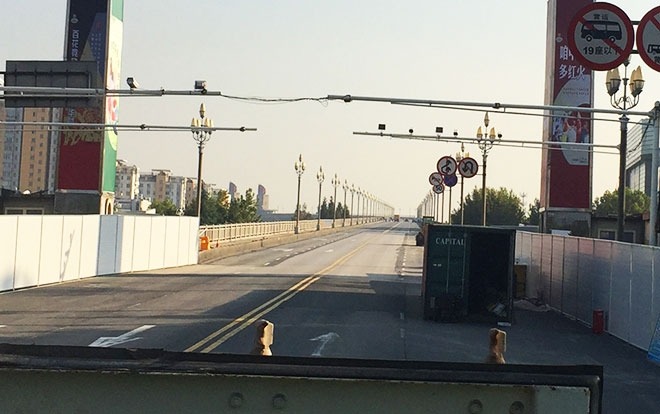The poor people of Pukou have always led a fairly isolated existence. Save for slow cumbersome access by ferry, the northern district was all but cut off from Nanjing’s central conurbation by the mighty Yangtze until 1968 when what was then only the second bridge to traverse the river opened after 6 years of construction.
More recently, additional bridges have followed along with two tunnels and two metro links. Pukounians have never had it so good. That all changed again on 28th October as the Nanjing Yangtze River Bridge was closed for more than two years’ worth of repairs.
Vast numbers of people used the bridge for their daily commute. Now, for them, there is no choice but the long way round. That means either Nanjing Number 2 Bridge, with its toll of ¥20, or one of the two tunnels or metro lines. All are now operating at over capacity.
The signs, or lack thereof, are almost ominous. Beginning much further north near Dachang, all signage referring to the bridge has been removed. It is almost as if there had been some incredible disaster or a giant government cover-up of such.
An employee of Jiangsu Highways who works in the Nanjing Number 2 Bridge toll booths spoke with Nanjing Expat. “We are seeing an increase in traffic on account of the closure of the Yangtze River Bridge, but mainly at peak times. Overall, the increase is not so significant, probably because of the toll”, she said.
Nearing ground zero in Pukou, road lanes approaching the bridge have been reallocated; what was three ahead and one left is now two left, one right and one ahead. There is a feeling of entering something akin to a ghost zone as the traffic thins to almost nil.
Authorities report that the two-year closure is required to make necessary repairs to the bridge’s superstructure. Two years ago, investigative work revealed damaged to some of the main trusses, which, while not immediately threatening, immediately started the gossip mill as to what steps would be taken.
Among the more imaginative were suggestions that a third deck be added to the bridge between those existing for both road and railway that would be able to handle 21st-century traffic flow. Seems that even China is not able to pull that one off.
Huang Lishi, 47, is one of the thousands who commutes daily. He recalls, “A few times I have actually walked across the bridge when the traffic was really bad at holiday times. You can really feel it shake beneath your feet. It is a reminder of just what an impressive feat of engineering the bridge is”.
All in Pukou no doubt look forward to a reopening some 27 months from now, when life may return to normal. For now, though, local people are accustoming themselves to a bridgeless life, in the process becoming very familiar with Metro line 3, while those who live adjacent to the bridge are taking solace in one fact; a unique peace and quiet.









